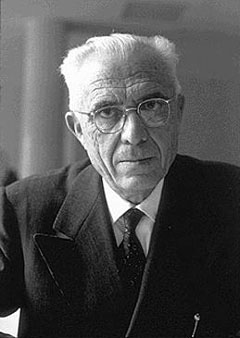- Pier Luigi Nervi
Infobox Engineer

image_size =
caption =
name = Pier Luigi Nervi
nationality = Italian
birth_date =birth date|1891|6|21|mf=y
birth_place =Sondrio ,Italy
death_date =Death date and age|1979|1|9|1891|6|21
death_place =
education =University of Bologna
spouse =
parents =
children =
discipline =Structural engineer
institutions =Society for Concrete Construction Institution of Structural Engineers
practice_name =
significant_projects = Olympic Stadium inRome (1960)UNESCO headquarters inParis (1950)Hangar in Orvieto (1935)
significant_design =
significant_awards =IStructE Gold MedalPier Luigi Nervi (
June 21 ,1891 -January 9 ,1979 ) was an Italianengineer andarchitect . He studied at theUniversity of Bologna and qualified in 1913. Dr. Nervi taught as a professor of engineering at Rome University from 1946-61. He is renowned for his brilliance as astructural engineer and his novel use of reinforced concrete.Biography
Pier Luigi Nervi was born in
Sondrio and attended the Civil Engineering School ofBologna , from which he graduated in 1913. After graduation, Nervi joined the Society for Concrete Construction. Nervi spent several years in the Italian army duringWorld War I from 1915-1918, when he served in the Corps of Engineering. His formal education was quite similar to that experienced by today's civil engineering student in Italy.Civil engineering works
Nervi began practicing civil engineering after 1923, and built several airplane hangars amongst his contracts. During 1940s he developed ideas for a
reinforced concrete which helped in the rebuilding of many buildings and factories throughout Western Europe, and even designed/created a boat hull that was made of reinforced concrete as a promotion for the Italian government.Nervi also stressed that intuition should be used as much as mathematics in design, especially with thin shelled structures. He borrowed from both Roman and
Renaissance architecture to create aesthetically pleasing structures, yet applied structural aspects such as ribbing and vaulting often based on nature. This was to improve the structural strength and eliminate the need for columns. He succeeded in turningengineering into an art by taking simple geometry and using sophisticatedprefabrication to find direct design solutions in his buildings.Engineer and architect
Pier Luigi Nervi was educated and practised as a "ingegnere edile" (translated as "building engineer") - in Italy, at the time (and to a lesser degree also today), a building engineer might also be considered an architect. After 1932, his aesthetically pleasing designs were used for major projects. This was due to the booming number of construction projects at the time which used concrete and steel in Europe and the architecture aspect took a step back to the potential of engineering. Nervi successfully made reinforced concrete the main structural material of the day.
International projects
Most of his built structures are in his native
Italy , but he also worked on projects abroad. Nervi's first project in the United States was theGeorge Washington Bridge Bus Station . He designed the roof which consists of triangle pieces which were cast in place. This building is still used today by over 700 buses and their passengers.Noted works
* Stadio Artemio Franchi,
Florence (1931)
* Exhibition Building,Turin ,Italy (1949).
*UNESCO headquarters,Paris (1950) (collaborating withMarcel Breuer andBernard Zehrfuss )
* The Pirelli Tower,Milan (1950) (collaborating withGio Ponti )
*Palazzetto dello sport ,Rome (1958)
* Olympic Stadium, Rome (1960)
* Palazzo del Lavoro, Turin (1961)
* Paper Mill,Mantua , Italy (1962)
*George Washington Bridge Bus Station ,New York City (1963)
*Tour de la Bourse ,Montreal (1964)
* Field House atDartmouth College
*Thompson Arena atDartmouth College
*Cathedral of Saint Mary of the Assumption ,San Francisco, California (1967) (collaborating withPietro Belluschi )
*Paul VI Audience Hall ,Vatican City (1971)
* Australian Embassy, Paris (1973) Consulting engineer
*Good Hope Centre ,Cape Town (1976) byStudio Nervi , an exhibition hall and conference centre, with the exhibition hall comprising an arch with tie-beam on each of the four vertical facades and two diagonal arches supporting two intersecting barrel-like roofs which in turn were constructed from pre-cast concrete triangular coffers with in-situ concrete beams on the edges.
*Norfolk Scope ,Norfolk, VA (1971)Awards
Pier Luigi Nervi was awarded Gold Medals by the
Institution of Structural Engineers , the AIA,RIBA and theAcadémie d'architecture .ee also
*
Thin-shell structure External links
* [http://www.romestate.it/fotobook_event.php?id=3&lang=eng Photos Palazzetto dello sport 1958] District Flaminio, Rome, Italy.
*
* [http://www.giovannardierontini.it/Pubblicazioni.htm"Pierluigi Nervi e l'arte di costruire",] Fausto Giovannardi, Borgo San Lorenzo (Florence) Italy 2008
Wikimedia Foundation. 2010.
